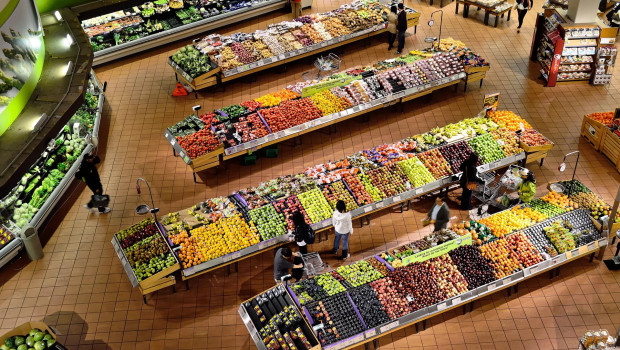UK inflation unexpectedly jumps to 10.4%

Inflation unexpectedly pushed higher last month, official data showed on Wednesday, driven by the soaring cost of food.
The consumer price index was widely expected to ease, with analysts and the Bank of England forecasting it to fall to 9.9% from 10.1% in January.
But according to the Office for National Statistics, CPI in the 12 months to February rose to 10.4%.
On a monthly basis, CPI rose 1.1% compared to a rise of 0.8% in February 2022. Forecasts had been for a 0.6% increase.
The largest upward contributions came from restaurants and cafes, which the ONS said was driven by increases in the cost of alcohol, as well as food, and clothing. Food prices soared by 18.2% over the year, the highest rate in 45 years.
Core inflation, which strips out the more volatile elements of food, energy, alcohol and tobacco, also rose sharply, to 6.2% from 5.8% in January. The one-month rate was 1.2%, ahead of expectations for 0.8%.
CPIH, which includes owner occupiers’ housing costs, was 9.2% in the 12 months to February, up from 8.8% in January. It was driven higher by housing and household services, principally from electricity, gas and other fuels.
Last week, the Office for Budget Responsibility forecast inflation would fall to 2.9% by the end of this year, from a peak of 11.1% in October 2022.
The focus now is on how the BoE will respond, with the Monetary Policy Committee announcing its latest decision on interest rates on Thursday. It has steadily increased the cost of borrowing over the last year, as it looked to tackle surging inflation, which peaked in October at 11.1% and remains stubbornly above its 2% target. Interest rates now stand at 4.0%.
Russ Mould, investment director at AJ Bell, called the print “the worst possible news for the Bank of England”.
He continued: “The BoE has two key roles: preserving financial stability and keeping a lid on inflation. To fulfil the former, it might have considered a pause on rates after a crisis in the banking sector. However the continuing surge in consumer prices means it can ill-afford any sort of let up.”
Michael Hewson, chief market analyst at CMC Markets UK, said: “Just when you think inflation can’t get any worse, it does. Not only that, but core prices also rose sharply, dealing a blow to the BoE’s claims that CPI has turned the corner and was starting to come down.
“The data seal the deal on a 25 basis point rate rise [on Thursday], but also increases the pressure for the central bank to go further and consider a 50bps move.”
Neil Wilson, chief market analyst at Finalto, said: “Hawks will point to this as a clear sign that inflation needs tackling still, while doves will be pinning their arguments on the OBR’s rosy forecasts. As I’ve consistently said, once inflation is out of the bottle it’s not easily put back in.”
However, Kallum Pickering, senior economist at Berenberg, said: “This upward jump interrupts the downward trend since October, a trend which is all but certain to continue over the course of 2023, as energy base effects wash out.
“As monthly data can be highly volatile, we would not put too much weight on a one-off surprise. After all the bigger than expected jump in February comes immediately after the bigger than expected drop in January.”
Samuel Tombs, chief UK economist at Pantheon Macroeconomics, said: “The jump in food CPI inflation is linked to shortages of some fruit and vegetables as a result of bad weather in southern Europe and Africa, and so should prove to be temporary.
“Looking ahead, the headline rate of CPI inflation likely will fall to about 9.6% in March, on the anniversary of the surge in motor fuel prices in the wake of Russia’s invasion of Ukraine.
“The recent moderation in energy prices and fall back in global agricultural commodity prices over the last six months also suggest that food CPI inflation will fall quickly over the coming months.
“All told, the MPC still should be able to confidently predict that CPI inflation will fall sharply over the rest of the year, perhaps even back to the 2% target, steering them away from a further significant increase in the bank rate.”